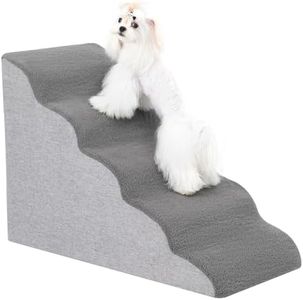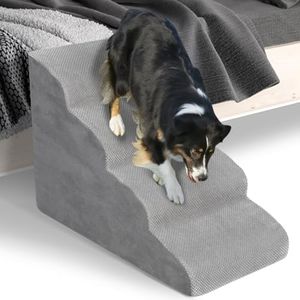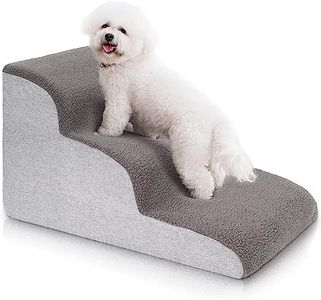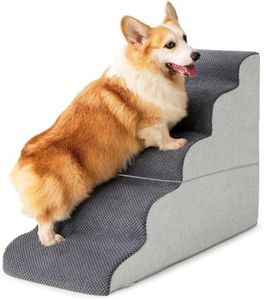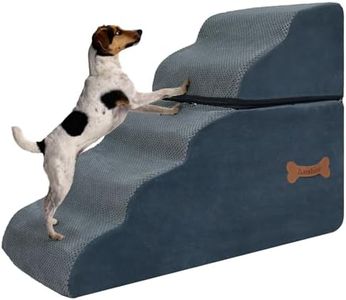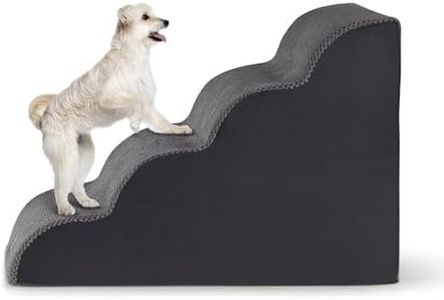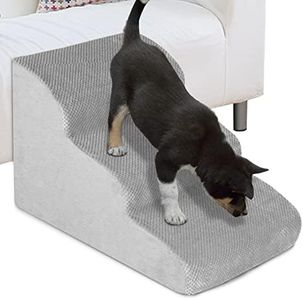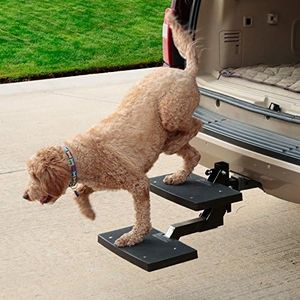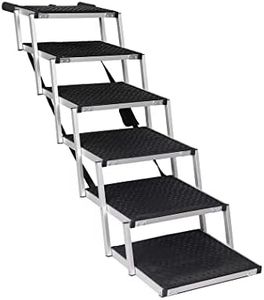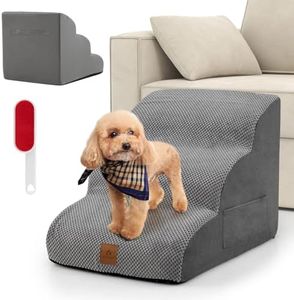We Use CookiesWe use cookies to enhance the security, performance,
functionality and for analytical and promotional activities. By continuing to browse this site you
are agreeing to our privacy policy
10 Best Dog Steps
From leading brands and best sellers available on the web.Buying Guide for the Best Dog Steps
When choosing dog steps, it’s important to consider both your dog's needs and where you’ll be using the product. Dog steps help pets safely reach higher places like couches, beds, or cars, especially if they’re small, elderly, or have mobility issues. Picking the right set ensures comfort and safety for your pet, so it’s essential to evaluate various features and decide which ones best match your dog and your living space.Size and HeightSize and height refer to the overall dimensions of the dog steps, including how tall they are and how wide each step is. This is important because the steps need to reach the desired surface (like your bed or couch) without being too high or too low. Dog steps often come in several height ranges: short sets for low furniture, medium height for most couches, and tall models for higher beds. Measure the height your dog needs to climb and look for steps that match or slightly exceed that height to ensure your pet can get up safely.
Number of StepsThe number of steps determines how many rises your dog will need to climb to reach the top. More steps with lower rises are easier for small or older dogs, as each individual step is less challenging. Fewer steps usually mean each rise is taller, which is better suited to larger or younger dogs. Think about your dog’s size and mobility to decide if they need gradual steps (more, shorter rises) or if they can comfortably handle steeper steps (fewer, taller rises).
Step Depth and WidthThe depth and width refer to how much surface area is available per step, affecting your dog’s ability to stand or walk comfortably. Wider and deeper steps are safer for bigger dogs or those with mobility issues, as they offer more space for careful movement. Narrower steps might be okay for small, agile dogs but could be risky for larger breeds. Make sure the steps give your pet enough room to gain balance during use.
Material and Build QualityDog steps can be made from foam, plastic, wood, or metal. Foam is lightweight and gentle on joints, making it good for senior dogs, but may not support very heavy pets. Plastic and wood are durable and easy to clean but can be heavier to move and may not have much 'give.' Metal frames are usually the sturdiest. The right choice depends on where you'll use the steps, your dog's weight, and whether you'll be moving the steps around often.
Weight CapacityThis is the maximum weight the dog steps can safely support. If your dog is heavy, make sure to check the weight limit of any steps you consider. Typically, smaller foam steps support less weight, while reinforced plastic, wood, or metal models offer higher capacities. Always pick a product rated for your pet's weight so you can be confident in their safety.
Non-Slip FeaturesNon-slip features include textured treads, rubber surfaces, or non-slip feet to help keep the steps in place and prevent your dog from slipping while climbing. These are particularly important for energetic, elderly, or unsteady dogs. Look for steps with grippy surfaces on each tread and stable, non-skid bases so your pet feels secure and comfortable each time they use the stairs.
Ease of CleaningDepending on your home and dog's habits, easy cleaning might be important. Some dog steps come with removable, washable covers or are made from materials that can be easily wiped down. If your dog sheds a lot or gets dirty paws, consider how simple it is to keep the steps clean to maintain both hygiene and longevity.
Portability and StoragePortability refers to how easy it is to move the dog steps from one place to another, while storage means how easily you can put them away when not in use. Lightweight or foldable designs are best if you plan to move the steps between rooms or take them when traveling. If you want permanent steps in one spot, sturdier, heavier options may be fine.
